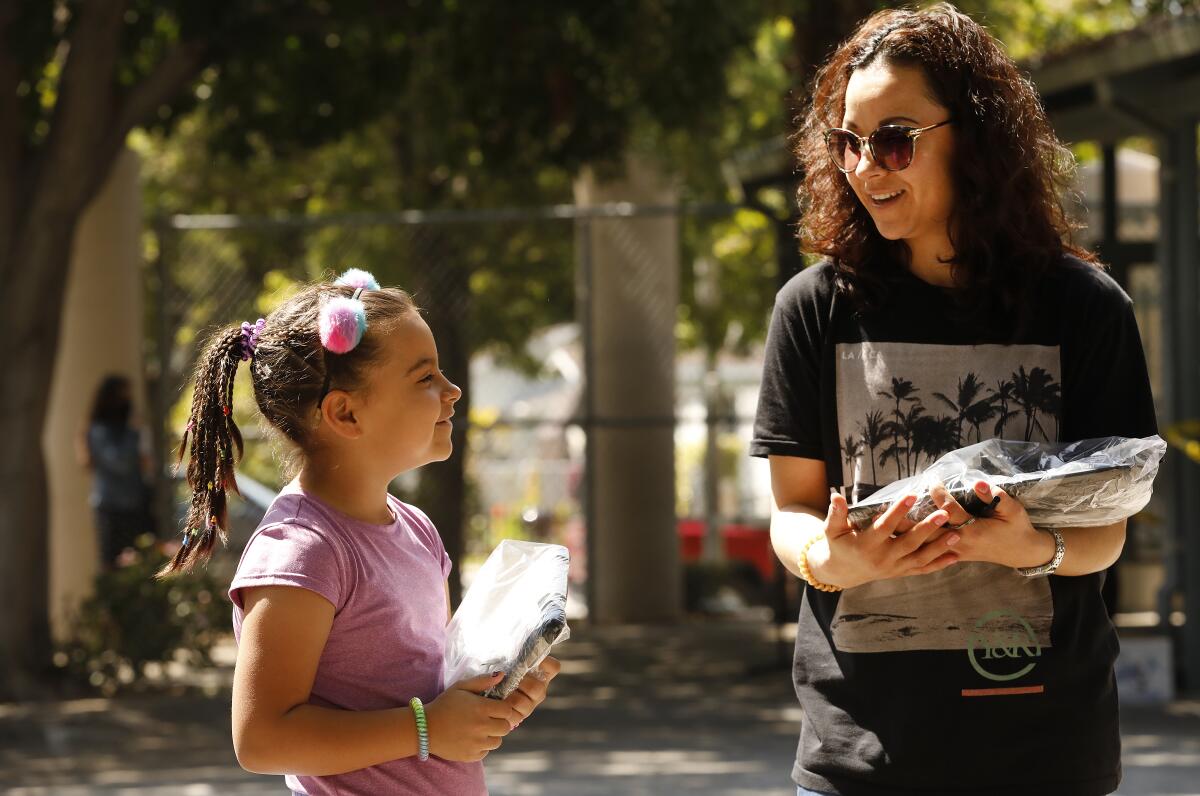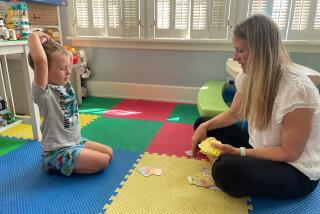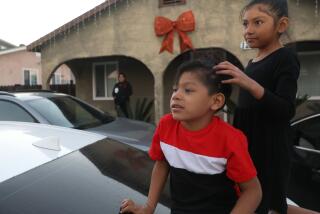Stress levels are high for parents. They worry kids will fall behind in school, survey finds

- Share via
Parents across California are more stressed than usual, and school — or lack thereof — is a major source, according to a statewide survey of 1,200 public school parents commissioned by a nonprofit research and advocacy group.
Most parents gave their schools and districts credit for short-term crisis planning, but worry about their kids falling behind academically. The same equity issues long entrenched in California education remain so during the pandemic, said Elisha Smith Arrillaga, executive director of Education Trust-West, which sponsored the survey conducted by the research firm Global Strategy Group from March 26 to April 1.
According to the poll, 89% of parents are concerned about ensuring their children do not fall behind academically during school closures, and 79% are worried about their children’s mental well-being while at home. The poll showed that 80% of parents said their own stress is higher or much higher than usual, and 49% reported that their children’s stress was higher than usual.
“Our poll finds that parents crave consistent contact with teachers and equitable access to academic resources,” Smith Arrillaga said. The poll found that access to remote learning was not equal. “Parents that were either low-income parents, African American parents or Latinx parents were less likely to have been in contact with their child’s teacher,” she said.
At first, when school closures were thought to only last through spring break, parents felt the expectations were manageable, said Araceli Simeon, project director for the Parent Organization Network. But now, as the length of closures stretch into the unknown and financial burdens increase, parents’ stress is growing, she said.
“The length of time has been extended as days and weeks go by,” Simeon said. “So right now a part of the stress is coming ... from the uncertainty, and really from not having a clear plan” for long-term distance learning or childcare.
Schools should now think about distance-learning plans that extend for six to nine months, and help families understand how to track their students’ progress, she said.
Beyond income and race, parents of students with disabilities and English learners reported greater challenges.
According to the survey, 31% of parents said their school or district is providing instructional materials for English learners, and 24% for students with disabilities, compared to 61% overall.
Parents of English learners in particular may not have the finances to augment their child’s education, since they are more likely to come from mixed-status family in which one or more adults are in the U.S. illegally. Households with any member who does not have work authorization will not receive the federal aid checks approved by Congress last week.
Also undocumented parents “will not be benefiting from the federal relief that many of us will be benefiting from,” said Xilonin Cruz-Gonzalez, president of the California School Boards Association and an Azusa Unified school board member. Because of that financial uncertainty, she said, it is important to “make sure we are communicating with the parents in the language they understand.”
A group of educators and school leaders is working to address achievement gaps that are exacerbated by the crisis, and the state Department of Education will continue to provide directions and learning models through guidance and webinars multiple times a week, said state Supt. of Instruction Tony Thurmond. A webinar on Thursday, for instance, will cover mental health services for students.
The state and school districts are also beginning to plan how to provide additional support to students through Saturday classes and summer sessions, Thurmond said, but decisions have not been finalized made about how to use state and federal funding.
More to Read
Sign up for Essential California
The most important California stories and recommendations in your inbox every morning.
You may occasionally receive promotional content from the Los Angeles Times.











